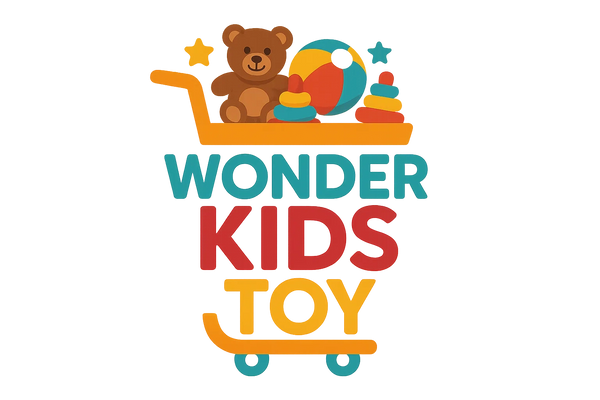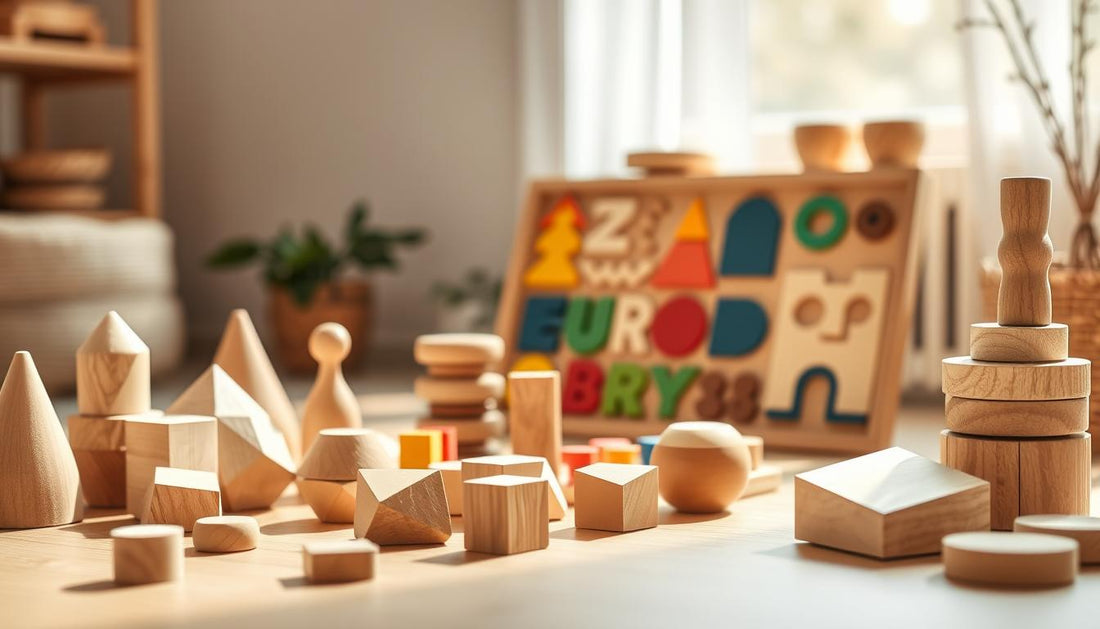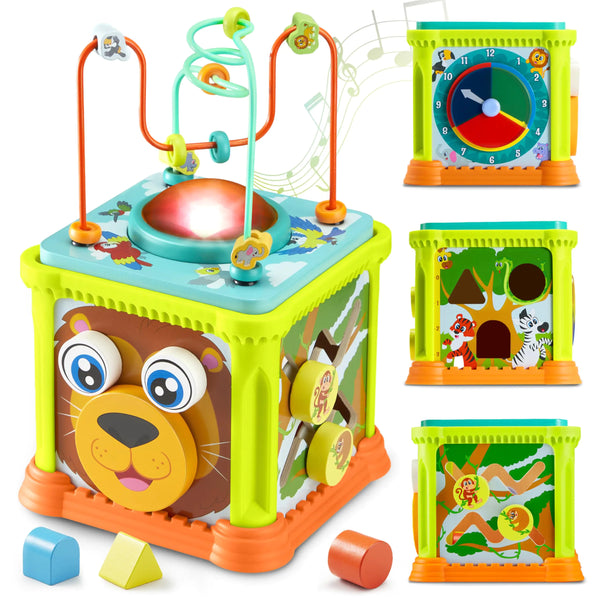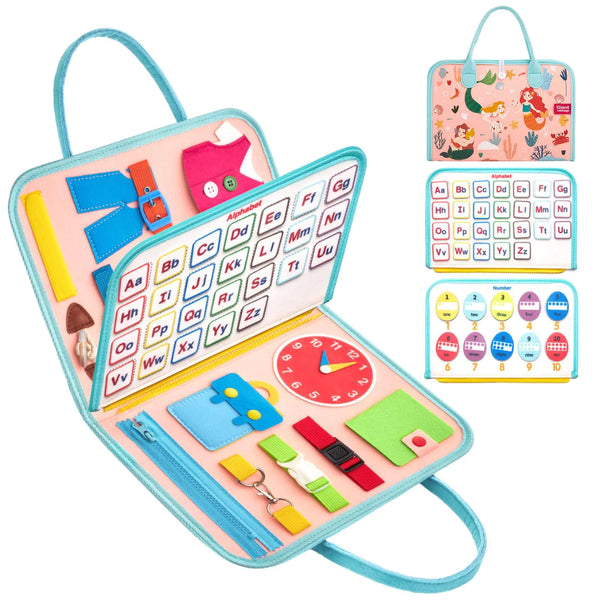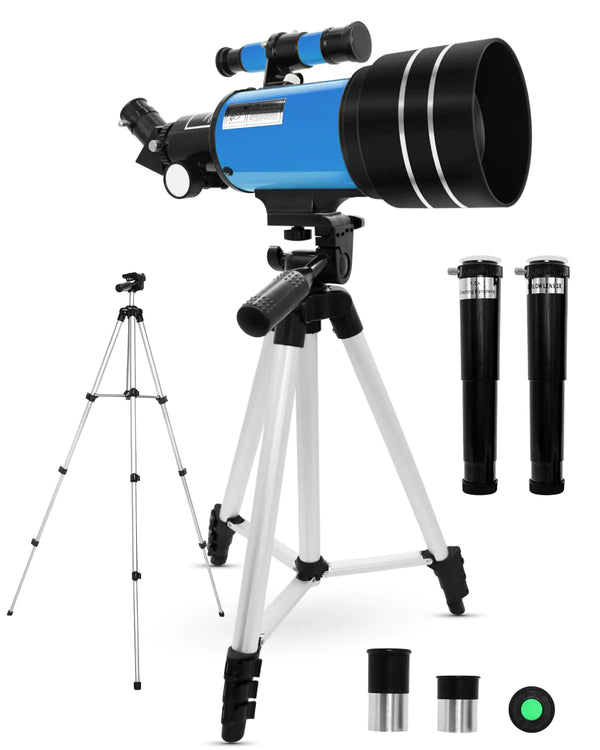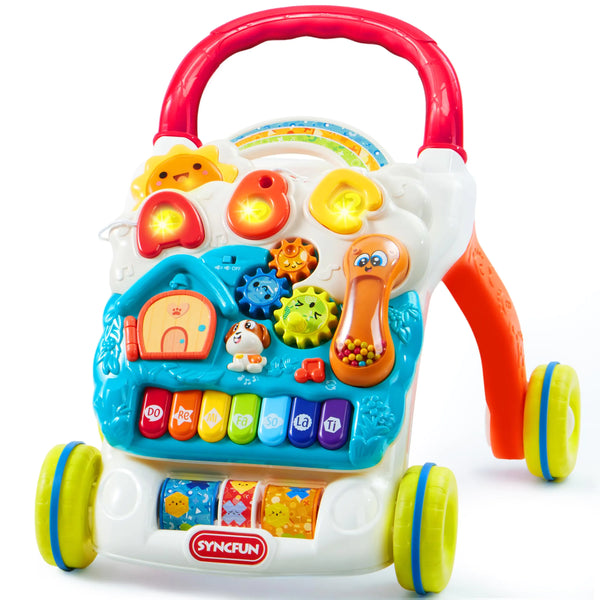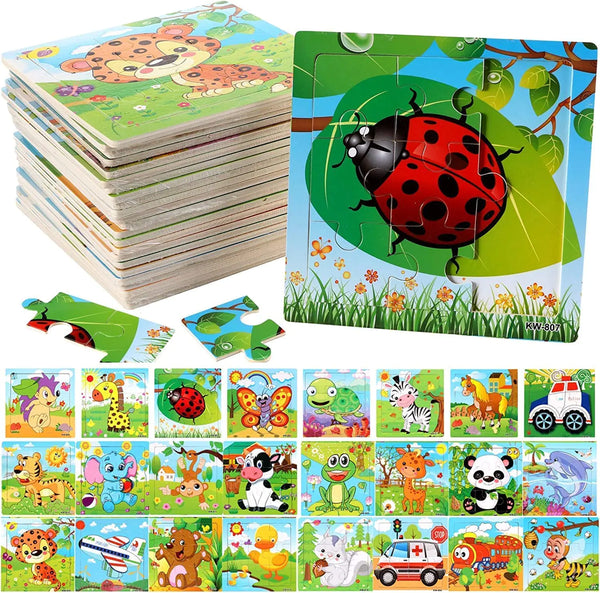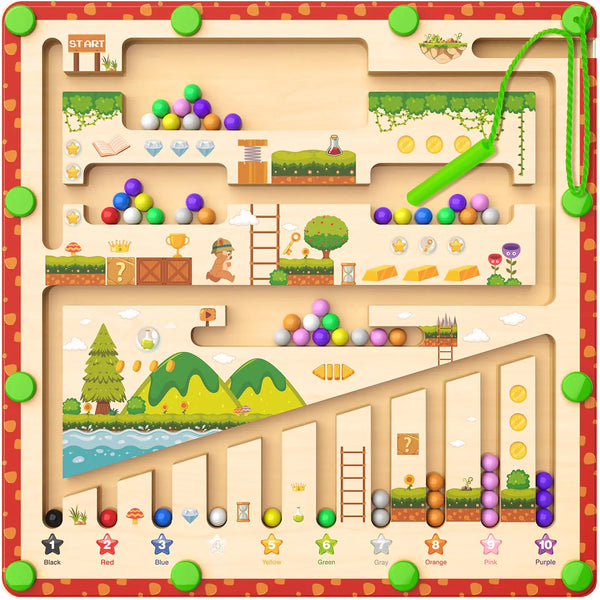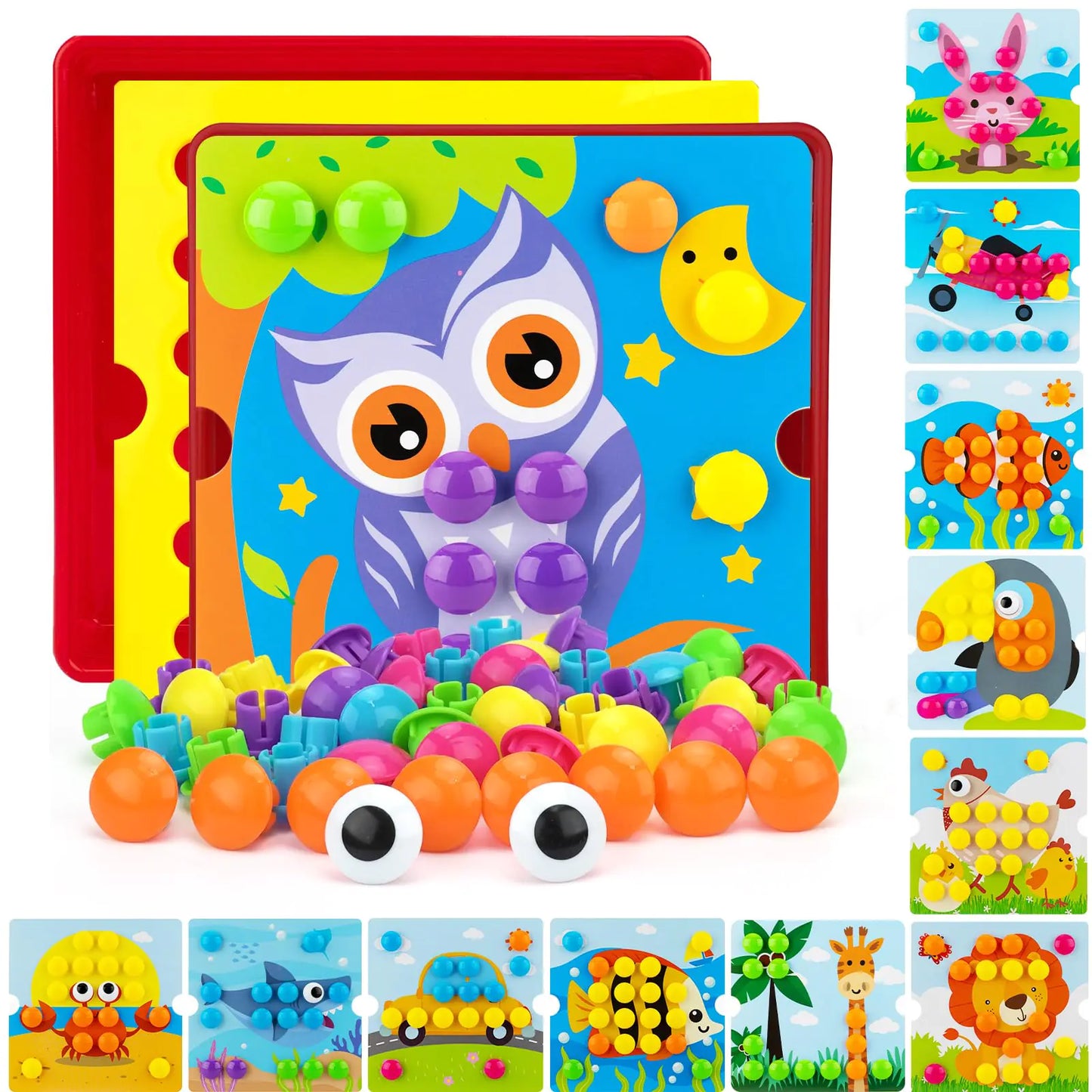As a parent, I'm always on the lookout for educational toys that help my child grow. I'm excited to share my guide to Montessori wooden toys for toddlers. These toys are designed to help children learn and grow, offering benefits that regular toys cannot provide.
I've discovered that Montessori educational toys are not just fun. They're also very durable, making them a wise choice for parents. Learning about these toys helps you select the best play materials for your child, providing them with a great start in life.
Key Takeaways
- Montessori wooden toys promote learning and development in toddlers.
- These toys are designed to be durable and long-lasting.
- Montessori educational toys offer a range of benefits for young children.
- They can help parents make informed decisions about their child's play materials.
- Montessori toys for toddlers are a great way to encourage learning through play.
What Are Montessori Toys?
Montessori toys are unique because they enable children to learn independently. They are made from natural materials, such as wood. This makes them perfect for a child's growth.
The Philosophy Behind Montessori Education
Montessori education emphasizes children leading their own learning. Toys and materials are designed to help children learn independently. This way, kids can solve problems and think critically.
Dr. Maria Montessori, the creator of the Montessori method, wanted to help kids learn naturally. She believed that special materials could aid children at various stages of their development.
Key Characteristics of Montessori Toys
Montessori toys are simple, durable, and teach kids new things. They are often made of wood. This makes them environmentally friendly and fun for kids to touch.
| Material | Educational Value | Durability |
|---|---|---|
| Wood | Promotes problem-solving and critical thinking | Highly durable and long-lasting |
| Natural Fibers | Encourages sensory exploration | Resistant to wear and tear |
Benefits of Montessori Toys for Development
Montessori toys benefit children in numerous ways. They improve fine motor skills and boost creativity. These toys also help kids feel confident and encourage them to love learning.
Some of the key benefits include:
- Encouraging independent play and self-directed learning
- Developing fine motor skills through hands-on activities
- Fostering creativity and imagination
Why Choose Wooden Toys?

Many parents opt for wooden Montessori toys to create a safe and environmentally friendly play area. These toys play a key role in Montessori education, helping children grow and learn.
Durability and Sustainability
Wooden Montessori toys are known for their durability. They can handle the rough play of toddlers better than plastic toys. This means they last longer, saving money and being better for the planet.
They're made from natural, renewable materials. When they wear out, they can be recycled or break down, helping the environment.
Safety Concerns with Plastic Toys
Plastic toys have raised health worries. They often have BPA and phthalates, linked to health problems in kids. Additionally, they can break into small pieces, which is a safety concern.
Wooden Montessori toys are a safer choice. They're non-toxic and don't pose the same risks as plastic toys.
Aesthetic Appeal of Wooden Toys
Wooden Montessori toys are not only practical, but also beautiful. Their natural look and simple design make playtime more engaging and creative. They add a touch of elegance to a child's space, making it more organized and less cluttered.
Top Benefits of Montessori Wooden Toys for Toddlers

As a parent, I've found Montessori wooden toys to be both fun and educational for toddlers. They're not just toys; they help develop essential skills for growth.
Encouraging Independent Play
Montessori wooden toys promote independent play in toddlers. This play is key to building self-reliance and confidence. It allows children to learn and explore at their own pace, supporting their natural development.
Some benefits of independent play include:
- Developing problem-solving skills
- Enhancing creativity
- Building self-confidence
Developing Fine Motor Skills
Wooden Montessori toys, such as puzzles and shape sorters, are excellent for developing fine motor skills in toddlers. These skills are vital for tasks that need hand-eye coordination.
The development of fine motor skills is essential for:
- Improving dexterity
- Enhancing hand-eye coordination
- Preparing for more complex tasks like writing
Fostering Creativity and Imagination
Montessori wooden toys also boost creativity and imagination. Open-ended toys, such as wooden blocks, allow children to express themselves and explore various scenarios.
Using these toys in playtime encourages toddlers to think creatively and grow their imagination.
Popular Types of Montessori Wooden Toys

Montessori wooden toys come in various forms. Each one is designed to support different aspects of a child's development. They are made from materials that are good for the planet and help kids learn through play.
Stacking and Sorting Toys
Stacking and sorting toys are key in Montessori learning. They help young kids improve their fine motor skills and hand-eye coordination. Montessori stacking toys are designed to be both fun and challenging. This makes kids feel proud of their achievements as they get better.
Puzzles and Shape Sorters
Puzzles and shape sorters boost problem-solving and thinking skills. Montessori shape sorters teach kids about shapes, colors, and how things fit together. This helps them develop skills for solving bigger problems in the future.
Role-Playing and Pretend Play Toys
Role-playing and pretend play toys spark creativity and social skills. Montessori role-playing toys, such as wooden kitchens and doctor's kits, allow kids to act out real-life roles. This helps them understand different roles and how to interact with others.
These Montessori wooden toys do more than entertain. They play a key role in helping toddlers grow in many ways. By selecting the right toys, parents can help their child develop a love for learning.
How to Choose the Right Montessori Toy

Choosing the right Montessori toy can be tricky. It's essential to understand what makes a toy suitable for your child. This helps in making the best choice.
Age-Appropriate Selections
Age is a key factor in picking a Montessori toy. Different age groups require different types of toys. For example, Montessori toys for babies focus on senses like touch and color.
- For babies (0-12 months), toys that stimulate the senses, such as wooden rattles or soft blocks, are beneficial.
- For 1-year-olds, toys that help develop motor skills, such as stacking cups or shape sorters, are best.
- For 2-year-olds, puzzles and playsets that promote problem-solving skills are recommended.
- For 3-year-olds, complex puzzles and imaginative play toys, like wooden kitchens or doctor's kits, are suitable.
Quality Over Quantity
Quality is more important than quantity when it comes to Montessori toys. A few good, educational toys are better than many cheap ones. Choose toys made from natural materials, like wood, for their durability and safety.
High-quality Montessori toys have:
- Durable construction that lasts through regular use.
- Non-toxic materials for the child's safety.
- A design that promotes learning and growth.
Local vs. Online Shopping
Choosing where to buy Montessori toys depends on your personal preferences. Local stores let you see toys in person and support local businesses. Online stores offer a wider range of choices and customer reviews to help you make informed decisions.
Think about these points when choosing between local and online shopping:
Local stores: You get the toys right away, can check them out, and support local businesses.
Online stores: You have more options, can read reviews, and often find better prices.
Where to Buy Montessori Wooden Toys

As a parent, finding reliable sources to purchase Montessori wooden toys is crucial. These toys are more popular than ever, making them easier to find. You can shop online or in-store, whichever you prefer.
Online Retailers to Consider
Online shopping is convenient for finding Montessori wooden toys. Some top online retailers include:
- Amazon - Known for its vast inventory and customer reviews.
- Etsy - An excellent platform for finding handmade and unique Montessori toys.
- Specialty toy stores - Many stores now have an online presence, with a range of Montessori toys.
When shopping online, reading reviews and checking product descriptions is key. This ensures the toys meet Montessori standards.
Supporting Local Toy Stores
Local toy stores are also a great place to find Montessori wooden toys. They offer a curated selection of educational toys. Shopping locally supports small businesses in your community.
Shopping at local stores has many benefits:
- Personalized service from knowledgeable staff.
- The opportunity to see and touch toys before making a purchase.
- Supporting local economies.
Eco-Friendly Brands to Explore
For those concerned about environmental impact, eco-friendly brands are a good choice. These brands use sustainable materials and production methods.
| Brand | Description | Eco-Friendly Features |
|---|---|---|
| Grimm's | Known for their high-quality, durable wooden toys. | Uses sustainably sourced wood and natural finishes. |
| PlanToys | Offers a range of wooden and recycled plastic toys. | Uses reclaimed wood and sustainable materials. |
| Hape | Creates toys that are both fun and educational. | Uses environmentally friendly materials and production methods. |
Choosing eco-friendly Montessori toys benefits your child and the planet. It's a way to support a sustainable future.
Care and Maintenance of Wooden Toys

To keep your child's Montessori wooden toys in top shape, it's key to know how to care for them. Proper care makes these toys last longer and stay safe for your child's playtime.
Cleaning Wooden Toys Safely
Cleaning your child's wooden toys is easy, but they do require some care. Avoid harsh chemicals or soaking the toys in water, as this can harm the wood or cause it to crack. Instead, use a soft, dry cloth to clean them. For hard-to-remove dirt, a slightly damp cloth is okay, but be sure to dry the toy thoroughly afterward.
- Use a soft, dry cloth for regular cleaning.
- Avoid harsh chemicals and excessive water.
- Dry the toys thoroughly after cleaning with a damp cloth.
Preventing Wear and Tear
Wooden toys are tough, but they can wear out if not handled right. Regular inspection helps spot problems early. Look for loose parts or damage and fix them quickly.
- Regularly inspect the toys for damage.
- Address any issues promptly to prevent further damage.
- Teach your child to handle the toys gently.
Storing Toys Properly
Storing toys properly is crucial to maintaining their good condition. Store them in a dry, cool place away from direct sunlight, which can cause fading or warping. A special toy storage box or shelf keeps them organized and safe.
- Store toys in a dry, cool place.
- Avoid direct sunlight to prevent fading or warping.
- Use a designated storage box or shelf.
By following these simple tips, your child's Montessori wooden toys will stay in great shape. They'll provide endless safe and fun playtime.
Incorporating Montessori Toys into Daily Life

To foster independence and curiosity, I've made it a point to incorporate Montessori toys into our daily routines and play spaces. This approach has not only enhanced my child's development but has also created a more engaging and supportive home environment.
Creating a Montessori Play Space
Designing a Montessori play space involves more than just arranging toys; it's about creating an environment that encourages exploration and learning. Here are some tips to consider:
- Ensure the space is safe and accessible, allowing your child to move freely and choose activities.
- Use low shelves and baskets to organize toys, making it easy for your child to select and return materials.
- Incorporate natural materials and lighting to create a warm and inviting atmosphere.
By thoughtfully designing the play space, you can promote independence and encourage your child to engage in meaningful play.
Daily Routines with Montessori Toys
Incorporating Montessori toys into daily routines can be a simple and effective way to enhance learning. For example, you can:
- Use stacking toys during clean-up time to practice fine motor skills.
- Incorporate sensory toys into bath time for a fun and educational experience.
- Utilize practical life toys, such as pouring and sorting toys, during mealtime or snack preparation.
These activities not only make daily routines more engaging but also help develop essential skills.
Combining Play and Learning Activities
One of the strengths of Montessori toys is their ability to combine play and learning seamlessly. By selecting toys that align with your child's interests and developmental stage, you can create engaging activities that are both enjoyable and educational.
"The greatest sign of success for a teacher... is to be able to say, 'The children are now working as if I did not exist.'" - Maria Montessori
This quote encapsulates the essence of Montessori education: fostering an environment where children can learn and grow independently.
By incorporating Montessori toys into your child's daily life, you can create a nurturing environment that supports their overall development and lays the foundation for a lifelong love of learning.
Understanding Your Child's Interests

Watching and adjusting to your child's interests helps their learning. As a parent, knowing what excites your child is key. It helps spark their curiosity and creativity.
Observing Play Preferences
One great way to get to know your child's interests is by watching their play. Montessori education values activities led by the child. Seeing how they play can tell you a lot about what they need to grow.
If your child loves building with blocks, it shows they're interested in fine motor skills and spatial awareness. By recognizing these interests, you can provide them with the support and resources they need to grow.
Adapting to Your Child's Growth
As your child grows, so do their interests and needs. It's essential to be flexible and change your approach to meet their needs. Watching their play and adjusting your strategies are big parts of Montessori parenting.
For example, as they become more confident, they might want to try more challenging activities. By creating a supportive space and introducing new challenges, you help them continue to grow.
Engaging with Open-Ended Questions
Engaging your child in open-ended questions can enhance their critical thinking and problem-solving skills. This method not only deepens their understanding but also makes learning fun.
Asking questions that lead to exploration and discovery helps your child see the world in a new way. For example, "What do you think will happen if..." encourages them to think deeply and explore different possibilities.
| Montessori Parenting Tips | Benefits | Implementation |
|---|---|---|
| Observe Play Preferences | Understand the child's interests | Watch the child's play, note preferences |
| Adapt to Growth | Support evolving needs | Adjust activities, introduce new challenges |
| Engage with Open-Ended Questions | Foster critical thinking | Ask exploratory questions, encourage discussion |
"The greatest sign of success for a teacher is to be able to say, 'The children are now working as if I did not exist.'"
By supporting your child's interests, you create a space that helps them grow. Remember, every child is different. Paying attention to their needs is essential for their success.
Balancing Screen Time and Playtime

Finding the right balance between screen time and play is key to a child's growth. Today, children are exposed to numerous screens, including TVs and tablets. Too much screen time can hinder their physical, emotional, and cognitive growth.
Parents need to strike a balance between screen time and hands-on play. Montessori education emphasizes learning through hands-on activities and play. This can help counteract too much screen time. By incorporating Montessori principles into daily life, parents can help their children thrive.
The Role of Technology in Early Childhood
Technology plays a significant role in our lives, and its impact on early childhood is a topic of debate. Some say it's suitable for learning, while others worry it can be bad.
A study in the Journal of Developmental & Behavioral Pediatrics found that too much screen time can cause problems. These include slower brain development, social and emotional difficulties, and reduced physical activity. However, used correctly, technology can offer learning opportunities and fun, interactive experiences.
| Age Group | Recommended Screen Time | Interactive Play Alternatives |
|---|---|---|
| 2-3 years | 1 hour | Puzzles, stacking toys, and role-playing |
| 4-5 years | 1.5 hours | Building blocks, shape sorters, imaginative play |
Setting Healthy Boundaries
It's essential to set limits on screen time. Parents can designate some areas as screen-free, such as the dinner table or bedrooms. They can also plan screen-free days or hours. This encourages kids to engage in other activities, such as reading, drawing, or playing outside.
"The key is not to eliminate screen time entirely but to find a balance that works for your family." - Dr. Jenny Radesky, pediatrician and screen time expert
Choosing Interactive Toys
Interactive Montessori toys are great for learning and growing. They encourage kids to explore, solve problems, and be creative. By selecting toys that align with Montessori principles, parents can help their children learn essential skills while minimizing screen time.
Examples of these toys include puzzles, shape sorters, and building blocks. They help kids think better and be more creative. By incorporating these toys into daily play, parents can help their kids develop a love for learning that extends beyond screens.
Inspiring Creativity with Montessori Toys

As a parent, I've seen how Montessori toys spark my child's creativity. These toys promote independence and self-directed learning. They're perfect for parents who want to nurture their child's artistic side.
Using Imaginative Play
Imaginative play is key to kids' development. It lets them try out different roles and stories. Montessori toys, such as wooden dolls and blocks, encourage this type of play.
These toys help children develop their problem-solving and creative skills. They also learn about the world in a fun way.
Building Storytelling Skills
Storytelling is essential for kids. It helps with language and creativity. Montessori toys, such as puppets, inspire children to tell their own stories.
Using puppets, kids can act out their stories. This play boosts their language skills and confidence.
Integrating Art and Crafting
Art and crafting are essential for kids' creativity. Montessori toys with artistic designs or crafting materials help kids explore their creativity.
When children engage in art and crafts, they express themselves in new ways. They also improve their fine motor skills and creativity.
Cognitive Benefits of Montessori Play

Montessori play offers many cognitive benefits. It improves problem-solving, memory, and focus. These skills are vital for a child's lifelong development.
Problem-Solving Skills Development
Montessori toys and activities challenge kids to solve problems. They learn to analyze, identify issues, and find solutions. For example, puzzles and shape sorters require critical thinking and adjustments.
Enhancing Memory and Focus
Montessori play boosts memory and focus. It asks children to focus on a single task for an extended period. Activities such as stacking blocks or puzzles can improve concentration.
Repetition in Montessori tasks also strengthens memory. Kids recall and apply what they've learned.
Encouraging Critical Thinking
Critical thinking is key, and Montessori play helps with it. It offers open-ended tasks that encourage exploration and learning at their own pace. For instance, sorting activities require kids to analyze and make decisions.
| Cognitive Benefit | Montessori Activity | Skill Developed |
|---|---|---|
| Problem-Solving | Puzzles and Shape Sorters | Analytical Thinking |
| Memory and Focus | Stacking Blocks and Concentration Games | Sustained Attention |
| Critical Thinking | Sorting Activities and Open-Ended Toys | Analytical Skills |
Social Skills Development through Play

Montessori play is more than just learning; it's a holistic experience. It's an excellent way for kids to develop critical social skills. Through play, they learn to work together, share, and interact with others.
Learning Cooperation and Sharing
Montessori play helps kids learn to cooperate and share. When they play together, they take turns and share things. For example, using a Montessori stacking toy to build a tower teaches them to work together.
- Children learn to negotiate and compromise.
- They develop empathy by understanding others' feelings.
- Montessori play encourages children to respect each other's space and belongings.
Role of Interactive Play
Interactive play is key in Montessori social skills development. It enables kids to communicate, respect one another, and work as a team. Interactive play makes learning social skills a fun and engaging experience.
Some examples of interactive Montessori play include:
- Role-playing with dolls or action figures.
- Engaging in group puzzles or shape sorters.
- Participating in pretend play with kitchen sets or doctor's kits.
Building Friendships with Other Kids
Montessori play provides numerous opportunities for children to form friendships. Through cooperative play, they learn to communicate, solve problems, and build lasting friendships.
When kids choose their activities, they often bond with others who share similar interests. This is a big part of Montessori social development. It helps them make healthy relationships as they grow.
Real-Life Experiences with Montessori Toys

As a parent, I've seen the significant impact Montessori toys have on kids. These toys help children learn and grow independently. We'll explore how parents have seen their children thrive with Montessori toys.
Success Stories from Parents
Many parents have observed significant improvements in their children's skills and problem-solving abilities. For example, a mom said her three-year-old daughter learned to dress herself with a Montessori dressing frame.
"The change in my child was remarkable. She became more confident and self-sufficient. The Montessori toys were instrumental in her development." - Sarah, mother of a four-year-old
John, another parent, said his son's creativity grew with Montessori toys. "My son used to be hesitant to play, but Montessori toys made him more creative and confident."
| Montessori Toy | Benefit | Parent Feedback |
|---|---|---|
| Stacking Toys | Develops Fine Motor Skills | "My child can now stack blocks without any help." |
| Puzzles | Enhances Problem-Solving Skills | "Puzzles have made my child more patient and determined." |
| Role-Playing Toys | Fosters Creativity and Imagination | "My child now engages in complex role-playing scenarios." |
Tips for a Successful Toy Experience
Choosing the right Montessori toys is key. Here are some tips:
- Observe your child's interests and preferences.
- Introduce toys gradually to avoid overwhelming.
- Encourage independent play.
Challenges You May Encounter
While Montessori toys are great, some parents face challenges. One big challenge is the cost. But many parents say the benefits are worth it.
To address these challenges, begin with a few essential toys. Additionally, consider joining online communities or local groups for support and advice.
The Power of Montessori Wooden Toys
Reflecting on my journey with Montessori wooden toys, I have come to appreciate their numerous benefits. They encourage kids to play independently, sparking creativity and imagination. These toys have a profound impact on a child's growth in many ways.
Key Takeaways
Montessori wooden toys offer many advantages. They help kids solve problems, improve memory and focus, and think critically. Choosing these toys provides kids with a strong foundation for future success.
Making Informed Choices
When picking Montessori toys, consider age, quality, and durability. Making wise choices ensures that your child gets the most out of these toys.
Embracing the Montessori Parenting Journey
My journey with Montessori toys has been fulfilling. Embracing the Montessori approach, I've created a supportive environment that fosters my child's growth. I invite you to explore Montessori wooden toys and see their positive effects on your child's life.
FAQ
What are Montessori wooden toys, and how do they differ from other toys?
Montessori wooden toys are made from natural wood. They help kids learn and grow through play. Unlike other toys, they focus on being simple, long-lasting, and hands-on.
What is the Montessori method, and how does it relate to these toys?
The Montessori method is a way of learning that allows children to lead. It uses hands-on activities and play. Montessori wooden toys support this approach.
Are Montessori wooden toys suitable for toddlers?
Yes, they are great for toddlers. They help kids learn and grow safely and last a long time.
How do I choose the right Montessori wooden toys for my child?
Think about your child's age, interests, and skills. Look for toys that are high quality, durable, and educational.
Can Montessori wooden toys help with my child's cognitive development?
Yes, they can. These toys help kids solve problems, remember things, and think critically through play.
How do Montessori wooden toys foster creativity and imagination?
They encourage kids to think creatively. Children can create their own stories and games with these toys.
Are Montessori wooden toys eco-friendly?
Many are. They're made from natural, sustainable wood. This makes them durable and reduces waste.
How do I care for and maintain my child's Montessori wooden toys?
Clean them gently with a soft cloth. Avoid too much water. Store them properly to prevent damage.
Can Montessori wooden toys be used alongside other educational materials?
Yes, they can. Use them alongside books, puzzles, and art supplies for a comprehensive learning experience.
How can I incorporate Montessori wooden toys into my child's daily routine?
Create a play space and set a play schedule. Play with your child to help them learn and grow.
What are some popular types of Montessori wooden toys for toddlers?
Toddlers like stacking toys, puzzles, shape sorters, and role-playing toys. These toys help them learn and develop through play.
Where can I buy Montessori wooden toys?
You can find them online, in local toy stores, or from brands that specialize in sustainable and educational toys.

